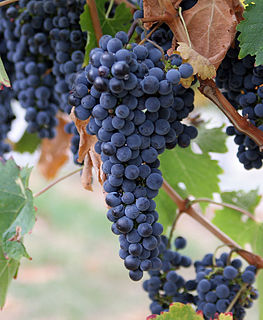 W
WWinemaking or vinification is the production of wine, starting with the selection of the fruit, its fermentation into alcohol, and the bottling of the finished liquid. The history of wine-making stretches over millennia. The science of wine and winemaking is known as oenology. A winemaker may also be called a vintner. The growing of grapes is viticulture and there are many varieties of grapes.
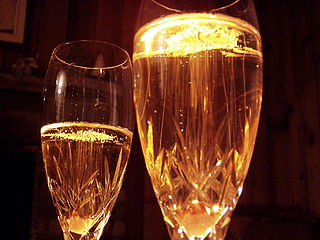 W
WAutolysis in winemaking relates to the complex chemical reactions that take place when a wine spends time in contact with the lees, or dead yeast cells, after fermentation. While for some wines - and all beers - autolysis is undesirable, it is a vital component in shaping the flavors and mouth feel associated with premium Champagne production. The practice of leaving a wine to age on its lees has a long history in winemaking dating back to Roman winemaking. The chemical process and details of autolysis were not originally understood scientifically, but the positive effects such as a creamy mouthfeel, breadlike and floral aromas, and reduced astringency were noticed early in the history of wine.
 W
WCarbonic maceration is a winemaking technique, often associated with the French wine region of Beaujolais, in which whole grapes are fermented in a carbon dioxide rich environment prior to crushing. Conventional alcoholic fermentation involves crushing the grapes to free the juice and pulp from the skin with yeast serving to convert sugar into ethanol. Carbonic maceration ferments most of the juice while it is still inside the grape, although grapes at the bottom of the vessel are crushed by gravity and undergo conventional fermentation. The resulting wine is fruity with very low tannins. It is ready to drink quickly but lacks the structure for long-term aging. In the most extreme case, such as with Beaujolais nouveau, the period between picking and bottling can be less than six weeks.
 W
WChaptalization is the process of adding sugar to unfermented grape must in order to increase the alcohol content after fermentation. The technique is named after its developer, the French chemist Jean-Antoine-Claude Chaptal. This process is not intended to make the wine sweeter, but rather to provide more sugar for the yeast to ferment into alcohol.
 W
WIn winemaking, clarification and stabilization are the processes by which insoluble matter suspended in the wine is removed before bottling. This matter may include dead yeast cells (lees), bacteria, tartrates, proteins, pectins, various tannins and other phenolic compounds, as well as pieces of grape skin, pulp, stems and gums. Clarification and stabilization may involve fining, filtration, centrifugation, flotation, refrigeration, pasteurization, and/or barrel maturation and racking.
 W
WDimethyl dicarbonate (DMDC) is an organic compound which is a colorless liquid with a pungent odor at high concentration at room temperature. It is primarily used as a beverage preservative, processing aid, or sterilant, and acts by inhibiting the enzymes acetate kinase and L-glutamic acid decarboxylase. It has also been proposed that DMDC inhibits the enzymes alcohol dehydrogenase and glyceraldehyde 3-phosphate dehydrogenase by causing the methoxycarbonylation of their histidine components.
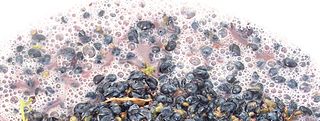 W
WThe process of fermentation in winemaking turns grape juice into an alcoholic beverage. During fermentation, yeasts transform sugars present in the juice into ethanol and carbon dioxide. In winemaking, the temperature and speed of fermentation are important considerations as well as the levels of oxygen present in the must at the start of the fermentation. The risk of stuck fermentation and the development of several wine faults can also occur during this stage, which can last anywhere from 5 to 14 days for primary fermentation and potentially another 5 to 10 days for a secondary fermentation. Fermentation may be done in stainless steel tanks, which is common with many white wines like Riesling, in an open wooden vat, inside a wine barrel and inside the wine bottle itself as in the production of many sparkling wines.
 W
WFinings are substances that are usually added at or near the completion of the processing of brewing wine, beer, and various nonalcoholic juice beverages. They are used to remove organic compounds, either to improve clarity or adjust flavor or aroma. The removed compounds may be sulfides, proteins, polyphenols, benzenoids, or copper ions. Unless they form a stable sediment in the final container, the spent finings are usually discarded from the beverage along with the target compounds that they capture.
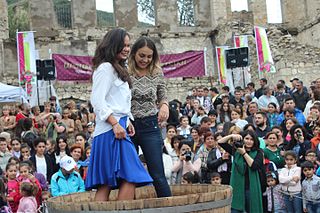 W
WGrape-treading or grape-stomping is part of the method of maceration used in traditional wine-making. Rather than being crushed in a wine press or by another mechanized method, grapes are repeatedly trampled in vats by barefoot participants to release their juices and begin fermentation. Grape-treading was widespread in the history of winemaking, but with the introduction of industrial methods, it now survives mostly as a recreational or competitive activity at cultural festivals.
 W
WIsinglass is a substance obtained from the dried swim bladders of fish. It is a form of collagen used mainly for the clarification or fining of some beer and wine. It can also be cooked into a paste for specialised gluing purposes.
 W
WLees are deposits of dead yeast or residual yeast and other particles that precipitate, or are carried by the action of "fining", to the bottom of a vat of wine after fermentation and aging. The same while brewing beer at a brewery is known as trub – the same from secondary fermentation of wine and beer are the lees or equally, as to beer only, dregs. This material is the source for most commercial tartaric acid, which is used in cooking and in organic chemistry.
 W
WMalolactic fermentation is a process in winemaking in which tart-tasting malic acid, naturally present in grape must, is converted to softer-tasting lactic acid. Malolactic fermentation is most often performed as a secondary fermentation shortly after the end of the primary fermentation, but can sometimes run concurrently with it. The process is standard for most red wine production and common for some white grape varieties such as Chardonnay, where it can impart a "buttery" flavor from diacetyl, a byproduct of the reaction.
 W
WThe transformation of water into wine at the Marriage at Cana or Wedding at Cana is the first miracle attributed to Jesus in the Gospel of John. In the Gospel account, Jesus, his mother and his disciples are invited to a wedding, and when the wine runs out, Jesus delivers a sign of his divinity by turning water into wine.
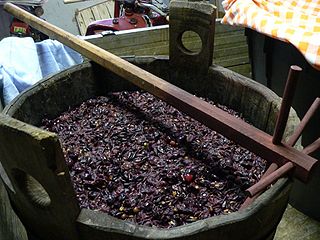 W
WMust is freshly crushed fruit juice that contains the skins, seeds, and stems of the fruit. The solid portion of the must is called pomace and typically makes up 7–23% of the total weight of the must. Making must is the first step in winemaking. Because of its high glucose content, typically between 10 and 15%, must is also used as a sweetener in a variety of cuisines. Unlike commercially sold grape juice, which is filtered and pasteurized, must is thick with particulate matter, opaque, and comes in various shades of brown and purple.
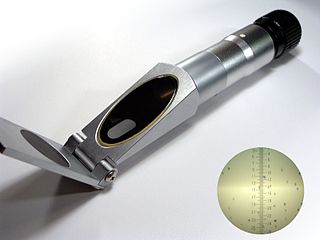 W
WMust weight is a measure of the amount of sugar in grape juice (must) and, hence, indicates the amount of alcohol that could be produced if it is all fermented to alcohol, rather than left as residual sugar. While must weight is a commonly used term among wine makers, the physically correct term would be must density.
 W
WOak is used in winemaking to vary the color, flavor, tannin profile and texture of wine. It can be introduced in the form of a barrel during the fermentation or aging periods, or as free-floating chips or staves added to wine fermented in a vessel like stainless steel. Oak barrels can impart other qualities to wine through evaporation and low level exposure to oxygen.
 W
WPressing in winemaking is the process where the juice is extracted from the grapes with the aid of a wine press, by hand, or even by the weight of the grape berries and clusters. Historically, intact grape clusters were trodden by feet but in most wineries today the grapes are sent through a crusher/destemmer, which removes the individual grape berries from the stems and breaks the skins, releasing some juice, prior to being pressed. There are exceptions, such as the case of sparkling wine production in regions such as Champagne where grapes are traditionally whole-cluster pressed with stems included to produce a lighter must that is low in phenolics.
 W
WRacking, often referred to as Soutirage or Soutirage traditionnel, also filtering or fining, is the process of moving wine or beer from one container to another using gravity rather than a pump, which can be disruptive to the beverage. The process is also known as Abstich in German and travaso in Italian.
 W
WSolera is a process for aging liquids such as wine, beer, vinegar, and brandy, by fractional blending in such a way that the finished product is a mixture of ages, with the average age gradually increasing as the process continues over many years. The purpose of this labor-intensive process is the maintenance of a reliable style and quality of the beverage over time. Solera means "on the ground" in Spanish, and it refers to the lower level of the set of barrels or other containers used in the process; the liquid is traditionally transferred from barrel to barrel, top to bottom, the oldest mixtures being in the barrel right "on the ground", although the containers in today's process are not necessarily stacked physically in the way that this implies but merely carefully labeled. Products which are often solera aged include Sherry, Madeira, Lillet, Port wine, Marsala, Mavrodafni, Muscat, and Muscadelle wines; Balsamic, Commandaria, some Vins doux naturels, and Sherry vinegars; Brandy de Jerez; beer; rums; and whiskies. Since the origin of this process is out of the Iberian peninsula, most of the traditional terminology is in Spanish and Portuguese.
 W
WSparkling wine production is the method of winemaking used to produce sparkling wine. The oldest known production of sparkling wine took place in 1531 with the ancestral method.
 W
WA stuck fermentation occurs in brewing beer or winemaking when the yeast become dormant before the fermentation has completed. Unlike an "arrested fermentation" where the winemaker intentionally stops fermentation, a stuck fermentation is an unintentional and unwanted occurrence that can lead to the wine being spoiled by bacteria and oxidation. There are several potential causes of a stuck fermentation; the most common are excessively high temperatures killing off the yeast, or a must deficient in the nitrogen food source needed for the yeast to thrive. Once the fermentation is stuck, it is very difficult to restart due to a chemical compound released by dying yeast cells that inhibit the future growth of yeast cells in the batch. Winemakers often take several steps to limit the possibility of a stuck fermentation occurring, such as adding nitrogen to the must in the form of diammonium phosphate or using cultured yeast with a high temperature and alcohol tolerance. These steps will each have their own subtle or dramatic effect on the resulting flavors and quality of the wine.
 W
WTorulaspora delbrueckii is a ubiquitous yeast species with both wild and anthropic habitats. The type strain of T. delbrueckii is CBS 1146T, equivalent to CLIB 230 or ATCC 10662, etc.. The type strain of T. delbrueckii CBS 1146 T was recently sequenced, and is composed of 8 chromosomes in addition to a mitochondrial genome.
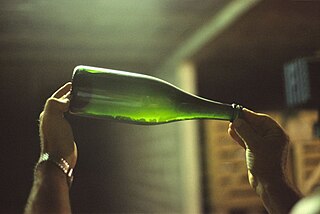 W
WThe traditional method is the process used in the Champagne region of France to produce Champagne. It is also the method used in various French regions to produce sparkling wines, in Spain to produce Cava, in Portugal to produce Espumante and in Italy to produce Franciacorta. The method is known as the méthode champenoise, but the Champagne producers have successfully lobbied the European Union to restrict the use of that term within the EU only to wines produced in Champagne. Thus, wines from elsewhere cannot use the term "méthode champenoise" on products sold in the EU, and instead the term "traditional method" or the local language equivalent. South African wines from the Western Cape are labelled with the term Methode Cap Classique. Some wine producers in countries outside the EU may disregard EU labeling laws and use méthode champenoise or even “Champagne” on labels for products not exported to the EU, but this usage is decreasing.
 W
WTrifon Zarezan is a Bulgarian national custom observed on the 1st or 14th of February in honor of Saint Tryphon.
 W
WA winepress is a device used to extract juice from crushed grapes during wine making. There are a number of different styles of presses that are used by wine makers but their overall functionality is the same. Each style of press exerts controlled pressure in order to free the juice from the fruit. The pressure must be controlled, especially with grapes, in order to avoid crushing the seeds and releasing a great deal of undesirable tannins into the wine. Wine was being made at least as long ago as 4000 BC; in 2011, a winepress was unearthed in Armenia with red wine dated 6,000 years old.
 W
WThe role of yeast in winemaking is the most important element that distinguishes wine from grape juice. In the absence of oxygen, yeast converts the sugars of wine grapes into alcohol and carbon dioxide through the process of fermentation. The more sugars in the grapes, the higher the potential alcohol level of the wine if the yeast are allowed to carry out fermentation to dryness. Sometimes winemakers will stop fermentation early in order to leave some residual sugars and sweetness in the wine such as with dessert wines. This can be achieved by dropping fermentation temperatures to the point where the yeast are inactive, sterile filtering the wine to remove the yeast or fortification with brandy or neutral spirits to kill off the yeast cells. If fermentation is unintentionally stopped, such as when the yeasts become exhausted of available nutrients and the wine has not yet reached dryness, this is considered a stuck fermentation.